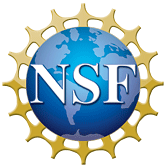none
NRAO/Socorro Colloquium Series
Ashley Zauderer
Harvard University
Radio Observations of the Tidal Disruption Event Swift J164449.3+573451: Two Years in Review
On 25 March 2011, an unusual gamma-ray detected transient source (Swift J164449.3+573451) was found. The long-lived X-ray emission and its decline rate, the coincidence of this source with the nucleus of an inactive galaxy, and the energetics indicate this to be a strong candidate for transient accretion onto a supermassive black hole from the tidal disruption of a solar mass star. I will show how radio detections established the presence of a relativistic outflow, not predicted to occur in tidal disruption events. I will summarize the extensive monitoring campaign at radio wavelengths, whereby we track the parsec-scale environment around a previously dormant supermassive black hole. Additionally, the radio observations inform the energetics of the event, the Lorentz factor, and the size. Finally, I will discuss the most recent dramatic change in X-ray emission and compare it to our radio observations. I will summarize the theoretical models presented to-date to explain the observations, and give a brief overview of predicted future behavior and our observing strategy. I will conclude with some comments about other tidal disruption event candidates and constraints on event rates.
March 22, 2013
11:00 am
Array Operations Center Auditorium
All NRAO employees are invited to attend via video, available in Charlottesville Room 230, Green Bank Room 137 and Tucson N525.
Local Host: Michael Rupen




Connect with NRAO